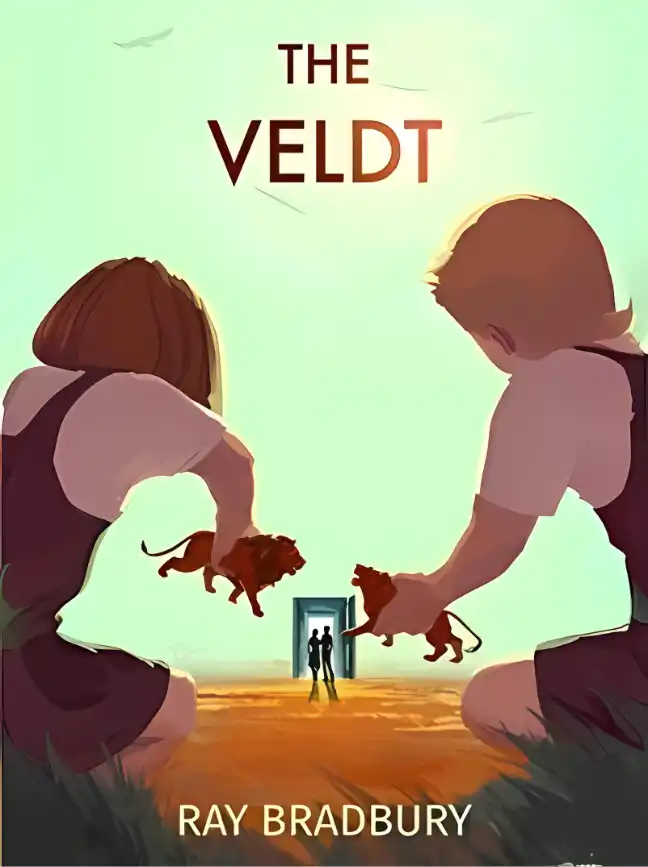The next day at lunch, I head downstairs to the Maxwells’ basement and start opening boxes. The basement is filled with shipping cartons they’ve yet to unpack and I only have to open three before I find what I’m looking for. I knew the Maxwells would have a baby monitor, and to my delight it looks pretty state-of-the-art. The transmitter is an HD camera with infrared night vision and regular/wide-angle lenses. The receiver is a large screen about the size of a paperback book. I stash everything in a small shoebox and carry it upstairs. When I return to the kitchen, Teddy is waiting.
“What were you doing in the basement?”
“Just poking around,” I tell him. “Let’s get you some ravioli.”
I wait until he’s busy eating his lunch, and then I sneak upstairs to his bedroom and look for a place to hide the camera. I’ve realized that if I want to know where the pictures are coming from, I need to see where they’re coming from—I need to see inside his bedroom during Quiet Time.
But hiding the camera isn’t easy. It’s big, clunky, and difficult to conceal. Even worse, it has to be plugged into a power outlet. But I find a solution in Teddy’s mountain of stuffed animals—I bury the camera ever so carefully, so the lens peeks out between Snoopy and Winnie-the-Pooh. I make sure it’s plugged in and set to transmit, and then I kiss
the cross that hangs from my neck, hoping to God Teddy won’t notice anything unusual.
I return to the kitchen and sit with Teddy while he finishes his lunch. He’s chatty this morning. He’s complaining about going to the barbershop—Teddy hates going to the barbershop, he says he wants to grow his hair long, like the Cowardly Lion—but I barely listen. I’m too nervous. I’m about to get answers to many of my questions, but I’m not sure I’m ready for them.
After what feels like hours, Teddy finishes his food and I send him upstairs for Quiet Time. Then I hurry into the den and plug in the receiver. Teddy’s bedroom is directly above me, so the audio and video are crystal clear. The camera is pointed toward his bed and I can see most of the floor—the two places where he’s most likely to sit and draw.
I hear the door to his bedroom open and close. Teddy enters the frame from the right, crosses over to his desk, and then grabs his sketchbook and pencil case. Then he leaps on top of his bed. I hear the soft thump of his mattress through the receiver and through the ceiling above my head, like it’s being broadcast in stereo.
Teddy sits with his back against the headboard, legs bent, using his knees to support the sketchbook. He arranges a row of pencils on the nightstand beside his bed. Then he removes a miniature pencil sharpener—the kind that collects the shavings in a clear plastic dome. He twists a pencil inside—skritch, skritch, skritch—then takes it out, examines the point, and decides it’s not sharp enough. He puts it back in—skritch, skritch—and then decides it’s ready.
I look away for an instant—just long enough to take a sip of water—and when I look back, the video is sputtering, freezing and skipping frames, like it can’t keep up with the audio. I can still hear the sharpening sounds but the video is frozen on an image of Teddy reaching for a pencil.
And then a single word, spoken softly, not much louder than a whisper: “Hello.”
It’s followed by a quick hiss of static. The video skips forward, then freezes again. The image has turned blurry, lo-res. Teddy is looking up from his sketch pad, directing his attention toward the door of his bedroom, to someone or something just outside the frame.
“Getting the pencils ready,” he says, and then laughs. “The pencils? For drawing.”
There’s a longer hiss of static, and the noise rises and falls with a rhythm that reminds me of breathing. Something in the microphone crackles and pops and again the picture skips forward—now Teddy is looking right at the camera, and his head has doubled in size. It’s like a reflection in a fun house mirror; his features are stretched to impossible proportions, his arms are short little flippers but his face is enormous.
“Careful,” he whispers. “Gently.”
The static gets louder. I try turning down the volume but the knob doesn’t do anything; the sound gets louder and louder until I hear it all around me, like it’s escaped the speaker and filled the room. The video skips ahead and there’s Teddy sprawled out on his mattress, arms extended, his body convulsing, and I can hear his bed thump-thump-thumping on the ceiling.
I run out of the den, through the foyer, and up the stairs to the second floor. I reach for Teddy’s doorknob but it won’t turn, it’s stuck, it’s locked.
Or something is holding it closed. “Teddy!”
I bang my fists on the door. Then I step back and kick it, like I’ve seen people do in movies, but all this does is hurt my foot. I try smashing my shoulder into the door and this hurts so much I sink to the floor, clutching my side. And then I realize I can see into Teddy’s room. There’s a tiny half-inch gap beneath his door. I lie on my side, rest my head on the floor, close one eye, and peer into the gap, and the smell hits me hard—a toxic punch of concentrated
ammonia, venting from the room like warm exhaust. It fills my mouth and I roll away, coughing and gagging and clutching at my throat like I’ve been pepper-sprayed. Tears stream down my face. My heart is going a mile a minute.
And as I’m lying in the hallway wiping the snot from my nose and trying to recover, trying to muster the energy to simply sit up, I hear the tiny mechanism in the doorknob click.
I scramble to my feet and open the door. Again I’m hit by the stench—it’s the smell of urine, extremely concentrated, suspended in the air like steam from a shower. I pull my shirt up and over my mouth. Teddy seems unaffected by the odor; he’s oblivious to all my shouting. He’s sitting on his bed with a sketch pad in his lap and a pencil in his right hand. He’s working quickly, slashing thick black lines across the page.
“Teddy!”
He doesn’t look up. Doesn’t seem like he’s heard me. His hand keeps moving—shading the page with darkness, filling in the black night sky.
“Teddy, listen, are you all right?”
Still he ignores me. I step closer to his bed and my foot comes down on one of his stuffed animals, a plush horse that emits a noisy high-pitched whinny.
“Teddy, look at me.” I place my hand on his shoulder and finally he looks up and I see that his eyes are completely white. His pupils have rolled back into his head. But still his hand keeps moving, drawing without seeing. I grab his wrist and I’m shocked by the heat of his skin, by the strength that’s coiled in his arm. Normally his body is loose and floppy like a rag doll’s. I often joke that he has hollow bones, because he’s light enough to lift off the ground and spin in a circle. But now there’s a strange energy thrumming beneath the skin; he feels like all his muscles are clenched, like a small pit bull terrier poised to attack.
Then his eyes snap back into place.
He blinks at me. “Mallory?” “What are you doing?”
He realizes he’s holding a pencil and he instantly drops it. “I don’t know.”
“You were drawing, Teddy. I was watching. Your whole body was shaking. Like you were having a seizure.”
“I’m sorry—”
“Don’t apologize. I’m not angry.”
His lower lip is quivering. “I said I was sorry!” “Just tell me what happened!”
And I know I’m yelling but I can’t help myself. I’m too freaked out by everything I’m seeing. There are two pictures on the floor and a third in process on the sketch pad.
“Teddy, listen to me. Who is this girl?” “I don’t know.”
“Is she Anya’s daughter?” “I don’t know!”
“Why are you drawing these things?” “I didn’t, Mallory, I swear!”
“Then why are they in your room?”
He takes a deep breath. “I know Anya isn’t real. I know she’s not really here. Sometimes I dream we’re drawing together, but when I wake up there are never any pictures.” He flings the sketch pad across the room, like he’s trying to deny its existence. “There shouldn’t be any pictures! We just dream them!”
And I realize what’s happening: Anya must be taking the pictures out of the bedroom, before Teddy wakes up, so he won’t have to look at them. And I’ve come along and interrupted their usual process.
It’s all too much for Teddy because he explodes into tears and I pull him into my arms and his body is soft and loose again; he feels like a regular boy again. I realize I’m asking him to explain something he doesn’t understand. I’m asking him to explain the impossible.
He places his right hand in mine, and I see his tiny fingers are smudged with dirty pencil marks. I hold him tight and calm him down and assure him that everything is going to be okay.
But really, I’m not so sure.
Because I know for a fact this kid is a lefty.








